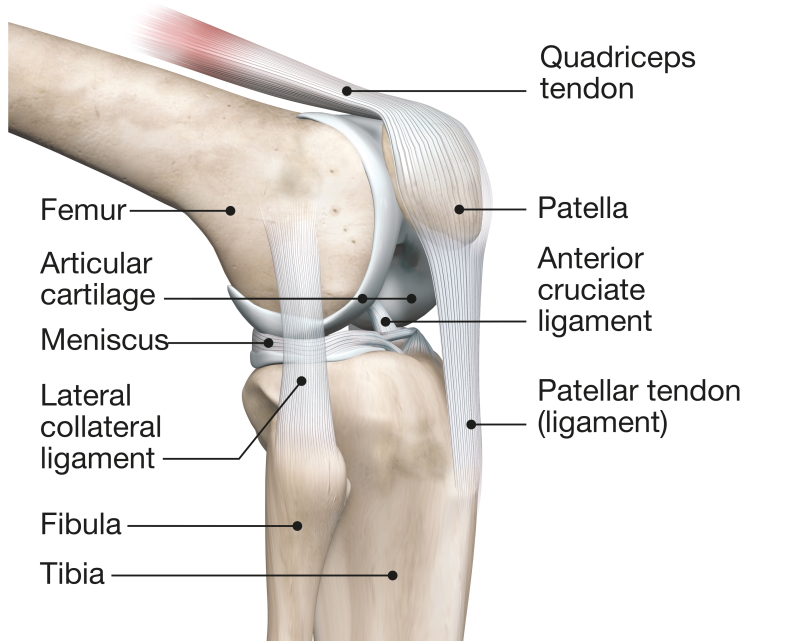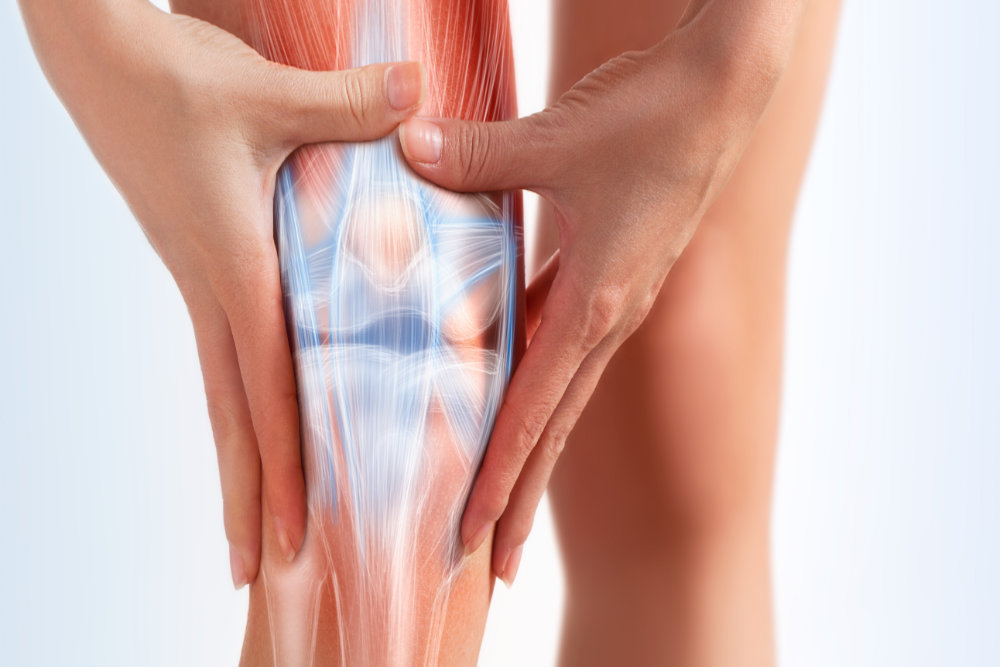Quadriceps Tendinopathy

Quadriceps tendinopathy is the medical term to describe pain in your quadriceps muscles. Typically referred to as your ‘quads’, these muscles are located at the front of the thigh and connect together via a tendon close to the kneecap (patella). As the quad muscles work to straighten out the knee from a bent position, like standing up from a chair, quad pain can make it very uncomfortable to perform simple daily tasks.
 Quad pain occurs when the quadriceps muscles, or the quadriceps tendon, are irritated or damaged. It is typically an overuse injury, meaning that it often occurs from doing repetitive activities that engage the quads for prolonged periods, while overloading or putting excess strain on the muscles and tendon This can commonly happen by regularly engaging in activities such as squats, weight-lifting, rugby and running sports.
Quad pain occurs when the quadriceps muscles, or the quadriceps tendon, are irritated or damaged. It is typically an overuse injury, meaning that it often occurs from doing repetitive activities that engage the quads for prolonged periods, while overloading or putting excess strain on the muscles and tendon This can commonly happen by regularly engaging in activities such as squats, weight-lifting, rugby and running sports.
Other factors that may contribute to the development of quadriceps tendinopathy include:
- Misalignment in the lower limbs, including abnormal foot biomechanics
- Knee alignment issues, including the irregular movement of the patella
- Muscle tightness, like in the iliotibial band
- Unsupportive footwear
- Poor training techniques that overload the quads and knees
When it comes to symptoms, aside from knee and thigh pain, you may experience stiffness at the knee, muscle weakness, swelling, and tenderness that is worsened by standing up from a seated position.
Can You Fix It?
 Unlike an arm that you can put in a sling and avoid using for a few weeks while it heals, you can’t help but use your quads and quadriceps tendon because of its function in walking and standing. This means that treating this pain takes time, and you must take care not to aggravate it further. It is also important to not only treat the painful symptoms, but address any underlying problems to stop it from coming back in the future by working alongside a podiatrist who can:
Unlike an arm that you can put in a sling and avoid using for a few weeks while it heals, you can’t help but use your quads and quadriceps tendon because of its function in walking and standing. This means that treating this pain takes time, and you must take care not to aggravate it further. It is also important to not only treat the painful symptoms, but address any underlying problems to stop it from coming back in the future by working alongside a podiatrist who can:
- Assess and identify any underlying concerns that may be contributing to your quadriceps pain
- Create a targeted exercise and movement plan for your lifestyle
- Support your quadriceps muscles and tendons to heal with stretches, and provide supportive garments to aid healing
How Is Quadriceps Tendinopathy Treated?
Before you come to see us, you can tend to your quad pain at home by:
- Icing the thigh or knee through a towel intermittently for 20 minutes at a time
- Taking non-steroidal anti-inflammatories (NSAIDs) like ibuprofen to reduce swelling, which helps with pain
- Avoiding activities that cause pain and tenderness and resting the muscles
Our podiatrists can help you by:
- Conducting a comprehensive assessment to determine what has caused and contributed to the development of your injury, including a video gait analysis
- Creating a treatment plan to help you recover and (ideally) get back to being pain-free – while helping prevent the problem from recurring
- Helping correct any alignment issues with the knees, legs and feet using orthotics and the right footwear for your foot type
- Addressing any muscle tightness with static and dynamic stretches at appropriate intervals during your recovery
- Strengthening any muscle weakness or imbalance using strengthening exercises, specifically in the knee and hip
- Strapping or bracing the thigh or knee to optimise your recovery
FAQs
How long does it take to recover from quadriceps tendinopathy?
This varies from person to person depending on the severity of your tendinopathy, as well as a range of other personal factors. Generally, mild cases of quadriceps tendinopathy may take several weeks to a few months to heal, while more severe cases may take several months or longer.
Can quadriceps tendinopathy be prevented?
In some cases, yes. Generally, ways to help prevent tendinopathies including quadriceps tendinopathy include:
- Warm up properly before physical activity, which may include light cardio, stretching, and targeted exercises.
- Wearing appropriate footwear for the activity can help provide adequate support and cushioning to the foot and ankle, reducing the risk of injury.
- Gradually increasing the intensity or duration of an activity, rather than jumping into it too quickly, can help reduce the risk of overuse injuries such as tendinopathy.
- Regular stretching and strengthening exercises for the lower leg muscles, including the tibialis anterior, can help improve flexibility and reduce the risk of injury.
- Using proper technique during physical activity, such as running or jumping, can help reduce stress on the foot and ankle and lower the risk of injury.
- Allowing adequate rest and recovery time between activities or workouts can help prevent overuse injuries, including tendinopathy.
- Activities that put excessive stress on the foot and ankle, such as jumping or running on uneven surfaces, should be avoided or performed with caution.
Are there any exercises or physical therapy that can help with quadriceps tendinopathy?
Yes – your podiatrist will prescribe a rehab exercise program that will involve both stretching and strengthening exercises to best support and optimise your recovery. This will likely include a combination of isometric and eccentric strengthening exercises, stretching exercises, range of motion exercises, and more.
Can quadriceps tendinopathy cause long-term complications?
When left untreated and the cause is not addressed, it can. The quadriceps may grow weaker and be more vulnerable to injury, which can lead to further pain – and even tears in the muscles or tendons. You may also start experiencing knee pain and other consequences as a result of problems with the quads, given their connection and interlinked functions.


